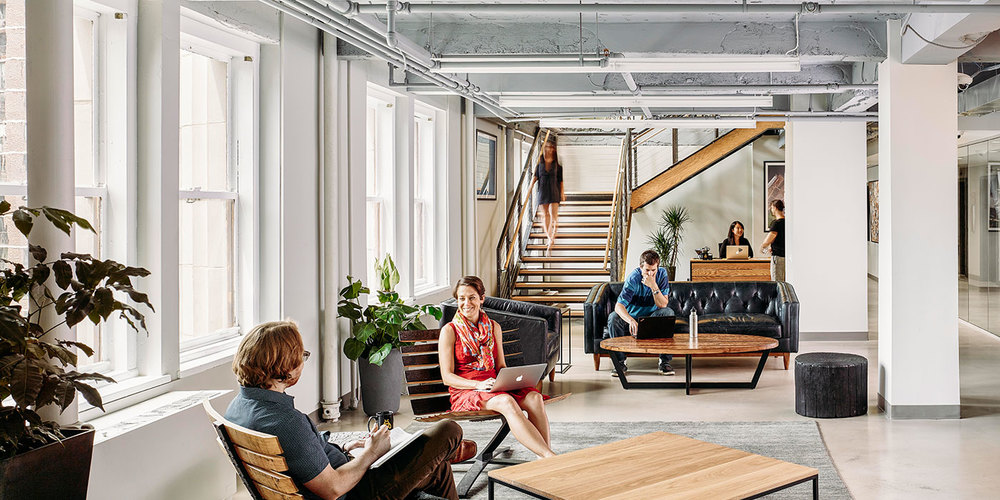The open office concept has proved to be more than a fad, it’s not going anywhere soon. While tech companies were the first to embrace this trend with beautiful designs, more traditional organizations are now following suit. However, the United States is lagging when it comes to adopting open office spaces.
A recent 17 country Steelcase study found that the United States had the largest percentage of individual private offices. The countries that took part included Germany, the UK, Canada, China, Russia and Belgium.
Is having less open offices a bad thing?
The rise of open offices started in the 90s, and has been fueled further by the millennial workforce. Employers have raced to create open workspaces that attract this top millennial talent. In the United States, roughly 20% of all office spaces are considered fully open office layouts.
Despite the trend, executives wary of losing their private offices question the change. They are not alone. Google “open office workplace” and there is no shortage of backlash against open offices. It has even been dubbed the “Open Office Trap” because of issues such as increased noise.
With strong opinions on both sides of the open office debate, facility managers may hesitate to implement an open layout. Ultimately, an effective layout for your organization comes down to managing both peoples’ needs and cost.
If you’re looking to effectively adopt the open office trend, here are some best practices that can help you make the shift.
How to create truly productive environments in an open office world:
Balance is key
Not everyone benefits from an open office space. Some employees work better in quieter spaces and efforts should be made to adapt to their needs.
JLL’s redesigned Chicago HQ serves as a good example. When choosing a layout, they looked at typical workspace tasks completed there. Office services took the opportunity to triple the space set aside for smaller 2 person meeting rooms. By listening to employee feedback, JLL realized that small, private workstations were often required for small meetings or conference calls.
Office furniture providers are taking note as well. To celebrate introverts, Steelcase launched a “Susan Cain Quiet Spaces” line. Some spaces foster productivity by providing a calm team-working settings. Other Quiet Spaces include private areas that promote a deeper focus. The sleek looking stations can be integrated in open layouts and are one way to provide a balance.

The “Be Me” design, a welcoming private space to encourage vitality – part of the Susan Cain Quiet Space Collection by Steelcase (Photo: Steelcase)
Setting rules or guidelines can also help promote a balance
Some companies have created “no talking” library type zones . Others have implemented “working times”, where people are expected to focus and be quiet. Using this approach to create a requires promoting mutual respect.
There are many other small changes that can be implemented at no cost. For example, designate an unused room as a silent space. This can serve multiple purposes for employees (mental health room, prayer room, sick room).
Make the transition as easy as possible
Employees need to feel comfortable in their workspace. Add features that make work in an open office easier. Examples include wireless charging stations, that can reduce employee anxiety when hot-desking. There’s nothing worse than being someplace new, with dying phone battery. Online meeting room booking or, IoT platforms, also help make the process seamless. Using such systems, employees can pinpoint open desks and book rooms on the fly. This approach was employed at Deloitte’s Amsterdam HQ.
Consider job functions in space planning
Consider the industry and the types of job functions carried out at your office. Is there a lot of client facing work that requires a different type of space? In that case, comfortable private meeting rooms would enhance the experience.
For spaces where collaboration is key for innovation, an open office could be the perfect fit.
It’s important to remember that no one understands the needs of employees better than their Facility Manager. Be confident in your knowledge and get feedback from employees along the way. You’ll create a workplace that everyone can embrace and enjoy.





